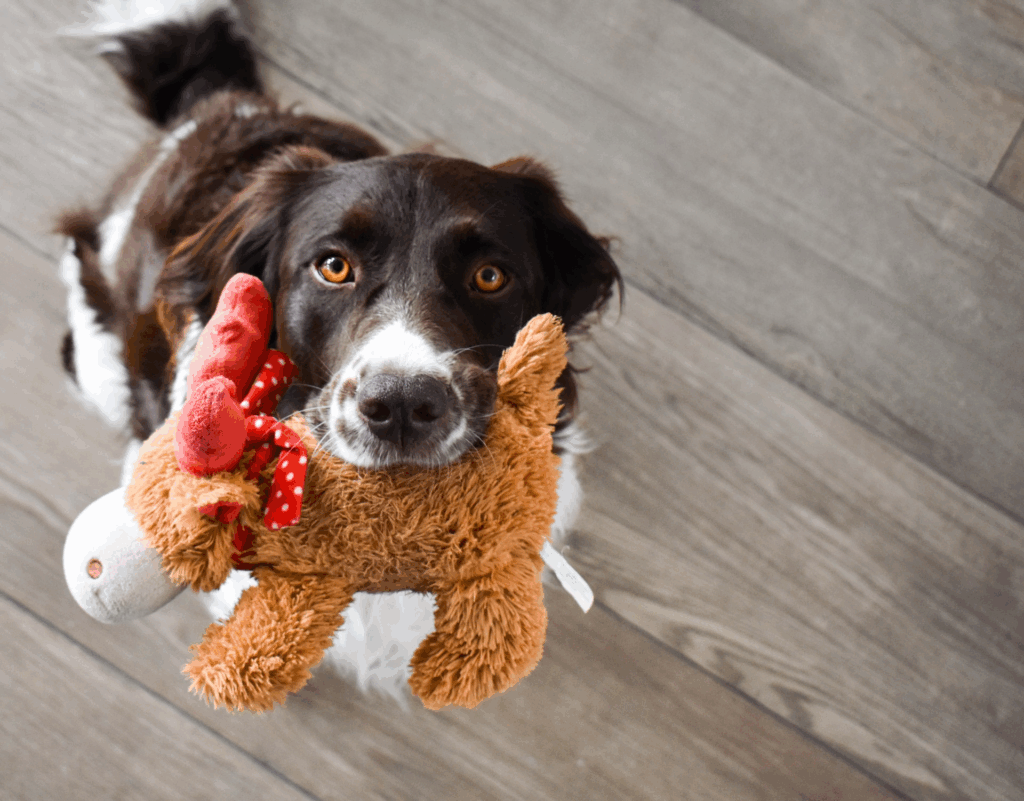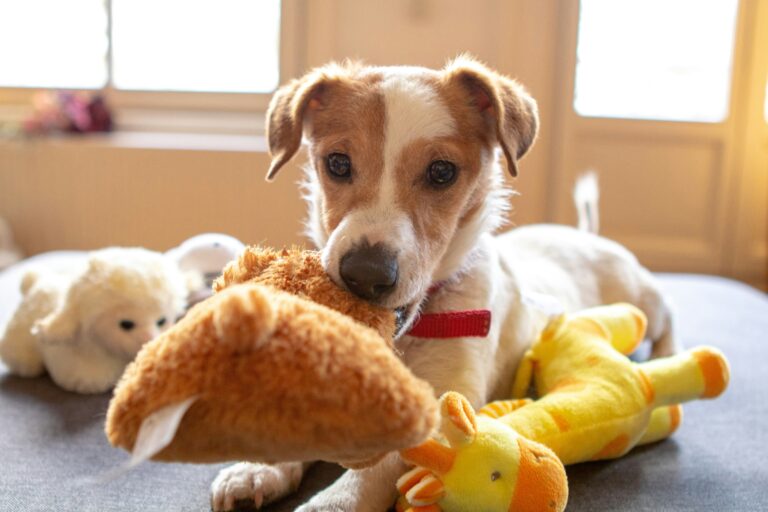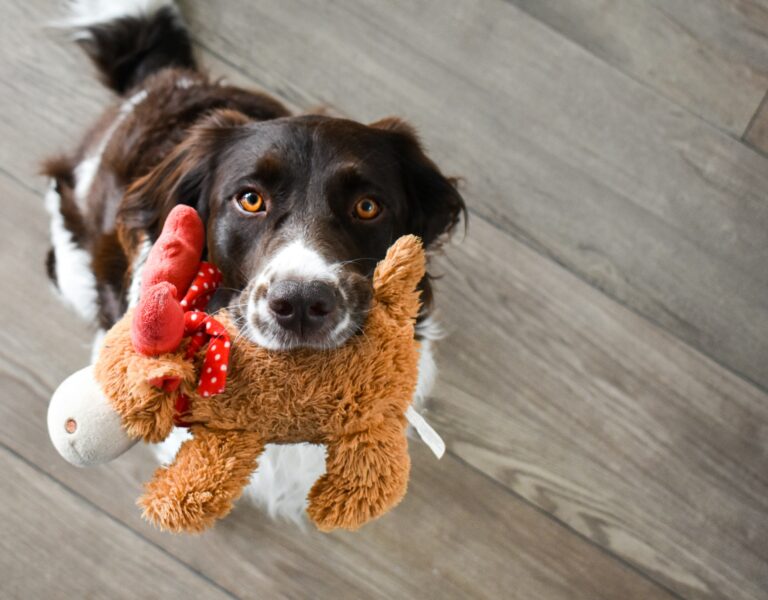Introducing a fresh perspective on a topic that every small breed dog owner grapples with: soft toys vs. rubber toys. In the quest to provide the best for our furry friends, the choice of the right toy becomes a crucial decision. This detailed discussion will delve into the various factors that will guide you in selecting the perfect toy for your little canine companion.
It’s not just a plaything, but an essential tool for your pet’s overall well-being. A toy can act as a stress-buster, an exercise tool, and even a learning aid for your pet. But the wrong type of toy can lead to unwanted complications. Hence, we will be dissecting the pros and cons of both soft and rubber toys, aiding you in making an informed decision.
We will be touching on aspects such as durability, safety, and even the entertainment quotient that each toy type brings. Is a squeaky soft toy better or a robust rubber toy? What suits your small breed dog better? The following sections will illuminate the answers to these questions and more.
Additionally, we’ll be taking into account the unique characteristics of small breeds. Their size, their chewing habits, and their level of activity all play a part in deciding the best type of toy. This examination will shed light on these areas, offering valuable insights tailored specifically for small breed dogs.

Join us as we embark on this journey of understanding the nuances between soft and rubber toys for small breeds. By the end of this comprehensive exploration, you’ll be equipped with the knowledge to make the best toy choice for your beloved furry friend. 🐾🦴🐶
Understanding Toy Materials: Soft vs. Rubber
Choosing the right toy material is a fundamental aspect of ensuring your small breed dog’s safety, comfort, and mental stimulation. While both soft and rubber toys offer benefits, they serve different purposes depending on your pet’s behavior, size, and chewing style. Understanding these distinctions will help you make better-informed decisions that align with your dog’s needs.
Soft Toys: Comfort, Engagement, and Emotional Support
Soft toys, often made from plush or fleece materials, are ideal for small breed dogs that enjoy gentler forms of play. These toys mimic the softness and warmth of natural prey, providing dogs with an object to cuddle, nuzzle, and carry around. In many ways, soft toys serve as security items, especially for younger dogs or dogs who experience anxiety when left alone.
Many soft toys come equipped with interactive features like squeakers, crinkly inserts, or rattles. These added elements appeal to a dog’s auditory senses and encourage extended play. The texture of the fabric itself—whether smooth, fuzzy, or fleece-like—can also contribute to your dog’s comfort and entertainment.
Soft toys are often shaped like animals, bones, or whimsical characters, making them visually appealing not only to dogs but to their owners as well. However, these same toys can pose risks if they are not selected or used appropriately. One of the most common concerns is the presence of stuffing. If a dog chews aggressively or manages to tear the fabric, the internal stuffing or squeaker can become a choking hazard or cause intestinal blockage if swallowed.
To reduce such risks, opt for soft toys specifically designed for dogs, especially those labeled “no stuffing” or “chew-resistant.” Double-stitched seams and reinforced fabrics can also help extend the life of the toy while minimizing safety hazards.
The Importance of Soft Toys for Puppies and Seniors
Soft toys are especially beneficial for two distinct life stages: puppies and senior dogs. Puppies, who are still developing their teeth and learning appropriate chewing behaviors, often find comfort in plush toys that are easy on the gums. These toys can even be placed in the freezer to provide relief during teething periods.
Senior dogs, on the other hand, may suffer from weakened jaws, dental issues, or arthritis. For them, softer materials offer a gentler alternative to hard rubber, enabling them to engage with their toys without discomfort. Soft toys can also serve as a comforting presence for older dogs experiencing cognitive decline or separation anxiety.
Rubber Toys: Durability, Dental Benefits, and Mental Stimulation
In contrast to soft toys, rubber toys are built to endure. They are made from materials such as natural rubber, thermoplastic rubber, or silicone—all of which are highly resilient and resistant to tearing. This makes them ideal for dogs who love to chew, tug, and bite with enthusiasm. For small breed dogs with strong chewing instincts, rubber toys provide a safer and more lasting solution.
One of the key advantages of rubber toys is their ability to support oral hygiene. Many rubber toys are designed with grooves or raised textures that help scrape plaque off teeth and massage the gums. Some are compatible with dog-safe toothpaste or come infused with dental-cleaning agents, adding another layer of benefit.
Rubber toys are also excellent vehicles for mental stimulation. Many can be filled with treats or peanut butter, requiring dogs to manipulate the toy in order to retrieve the reward. This not only keeps them occupied but also sharpens their problem-solving skills. Puzzle toys, chew rings, and bouncing rubber balls all fall under this versatile category.
Because rubber is waterproof and easy to clean, these toys are also great for outdoor use or for play in water. Some float, adding another dimension of play for dogs who enjoy a splash in the pool or lake.
Choosing the Right Rubber Toy for Your Small Dog
Not all rubber toys are created equal, especially when it comes to small breeds. It’s essential to choose toys that are appropriately sized. A toy that is too large may be impossible for your dog to grip, while a toy that is too small can become a choking hazard. Always read the manufacturer’s sizing guidelines and choose toys that are labeled for small or toy breeds.
It’s also important to assess your dog’s chewing habits. If your dog tends to gnaw persistently or attempts to destroy everything they chew, opt for extra-durable options like those made from natural rubber or those marketed as “indestructible.” Brands such as KONG, Nylabone, and West Paw offer durable rubber toys that are engineered for heavy chewers.
Rubber toys also come in a variety of shapes, including dumbbells, bones, rings, and balls. Some have ridges, while others feature compartments for treat-stuffing. Each design serves a slightly different purpose, from teething relief to puzzle-solving engagement.
Hygiene, Maintenance, and Storage
Regardless of whether you choose soft or rubber toys, proper maintenance is essential. Toys should be cleaned regularly to prevent the buildup of bacteria and odors. Soft toys are usually machine washable, though they should be dried thoroughly to avoid mold. Rubber toys can often be cleaned with warm, soapy water or placed in the dishwasher (check manufacturer guidelines).
Storing toys in a clean, dry area can also prolong their life. Consider rotating toys every few days to keep your dog’s interest high while giving previously used toys time to dry and regain shape. This method not only improves hygiene but also maintains mental stimulation by creating the illusion of novelty.
Safety Guidelines for Toy Usage
Supervision during playtime is always recommended, especially when introducing a new toy. Even if a toy is labeled as “safe” or “durable,” your dog may find a way to chew through it or misuse it. If any toy begins to show signs of significant wear, such as fraying seams, missing pieces, or splintering, it should be removed immediately.
Avoid toys with glued-on decorations, plastic eyes, or any components that could be torn off and swallowed. Also, steer clear of toys that are too hard, as they could damage your dog’s teeth or jaw. If a toy doesn’t pass the fingernail test (i.e., if you can’t dent it with your nail), it may be too hard for your dog to chew safely.
When to Consult Your Veterinarian
If you’re ever in doubt about the best toys for your dog—especially if they have dental issues, food allergies, or unique behavioral challenges—don’t hesitate to consult your veterinarian. Vets can recommend specific toy types that align with your dog’s health profile and may also point out warning signs of dental disease or compulsive chewing.
They can also offer suggestions for therapeutic toys that serve medical purposes, such as anxiety-reducing toys for dogs with behavioral conditions or specially formulated dental toys for dogs prone to tartar buildup.
Rubber Toys: Durability and Exercise
On the other hand, rubber toys are known for their durability. They are an excellent choice for dogs who are aggressive chewers, as they can withstand the force of a dog’s jaws.
Rubber toys are versatile, offering a range of options from simple chew toys to puzzle toys that can be filled with treats. This keeps dogs mentally stimulated and encourages active play. Furthermore, they can be an excellent tool for oral health, as chewing on rubber toys can help clean a dog’s teeth.
Factors to Consider when Choosing Toys for Small Breeds
When choosing the best toys for small breeds, several factors should be considered.

Size and Shape
Firstly, the size and shape of the toy are essential considerations. Toys should be small enough for your dog to comfortably handle, but not so small that they can be swallowed.
Chewing Habits
Secondly, consider your dog’s chewing habits. For aggressive chewers, rubber toys may be a better choice as they are more durable. However, for dogs who are gentle chewers or prefer to cuddle with their toys, soft toys may be more appropriate.
Safety
Safety is another crucial factor. Ensure the toys you choose do not have small parts that can be easily swallowed or choked on.
Interactive Features
Finally, consider the interactive features of the toy. Toys that can be filled with treats, or that have sounds, can help keep your dog engaged for longer periods.
Exploring Texture and Sensory Engagement in Dog Toys
Soft and rubber toys each bring unique textures that influence a small dog’s sensory experience. Soft toys often feature fleece, plush, or microfiber surfaces, which provide a gentle and comforting tactile feel. These textures are particularly appealing to dogs who enjoy snuggling or simulating nurturing behaviors, such as carrying or licking their toys. For puppies or more anxious dogs, soft textures may promote a calming effect.
Noise and Play Behavior Reinforcement
Another key element of soft toys is their interactive auditory design. Many include squeakers, crinkle sheets, or embedded rattles that simulate prey sounds. This satisfies natural instincts and reinforces play behavior. Dogs often become attached to toys that respond to their biting and pawing, helping maintain their interest over time. However, owners should be mindful of squeakers in poorly made toys, as they can become choking hazards if dislodged.
Durability Considerations for Soft Toys
Despite their appeal, soft toys typically lack the durability of rubber counterparts. Frequent chewing can lead to exposed stuffing or torn seams, especially in more energetic dogs. Choosing double-stitched edges, reinforced seams, or toys labeled for tough chewers can extend the toy’s life. Still, routine inspection and replacement remain crucial to avoid ingestion of synthetic fibers or broken squeakers.
Rubber Toys and Their Impact on Oral Hygiene
Rubber toys offer a clear advantage when it comes to durability and dental support. Many are designed with textured surfaces or ridges specifically intended to massage gums and dislodge debris from teeth. This can reduce plaque buildup and promote healthier breath without the need for daily brushing. Incorporating rubber chew toys into your dog’s routine can be a valuable supplement to regular dental care practices.
Mental Stimulation Through Rubber Toys
In addition to physical durability, rubber toys often include interactive elements that challenge your dog’s mind. Treat-dispensing balls, puzzle toys, or freeze-friendly options can extend playtime while fostering problem-solving skills. This level of engagement is ideal for reducing boredom, managing anxiety, and reinforcing positive chewing habits. Such toys may even serve as training aids or meal replacements in enrichment routines.
Age and Toy Preference Correlation
Toy selection should also take into account the age and life stage of your dog. Puppies, with their sensitive gums and teething needs, tend to prefer softer, more pliable toys. Older dogs may require softer textures due to weakening teeth or gum sensitivity, especially breeds prone to dental problems. Adult dogs in their prime might benefit most from firmer rubber toys that challenge their strength and provide jaw resistance.
Behavioral Factors in Toy Selection
Understanding your dog’s unique behavioral tendencies is critical in choosing between soft and rubber toys. Dogs that display nurturing behaviors may gravitate toward soft toys they can carry and cuddle. More dominant or high-energy dogs might benefit from rubber toys that allow for assertive chewing and interactive tasks. Some dogs may switch preferences throughout the day or week depending on their mood or energy level.
Environmental and Cleaning Considerations
The cleanliness of a toy also plays a role in overall pet health. Rubber toys are easier to sanitize—they can often be placed in the dishwasher or soaked in hot soapy water. Soft toys require machine washing and may wear out faster through repeated laundering. Choosing machine-washable plush toys and establishing a washing schedule can help maintain hygiene and prevent the buildup of bacteria or allergens.
Safety Features to Watch For
Both soft and rubber toys come with potential hazards if not chosen carefully. Avoid toys with glued-on components like eyes or bows, as these can detach and pose a choking risk. For rubber toys, inspect for cracks or chunks that may break off during chewing. Always select toys that are free from toxic chemicals such as BPA, phthalates, or lead-based dyes, and verify product labels for compliance with safety standards.
Economical and Environmental Impact
While cost should not compromise quality, it’s worth noting that durable rubber toys typically have a longer lifespan and may offer better value over time. Some companies also offer eco-conscious products made from recycled materials or biodegradable compounds. Soft toys, while cheaper upfront, may need more frequent replacement. Consider rotating both types of toys to reduce waste and maximize utility. these, you can ensure that your dog has a range of safe and engaging toys to enjoy.
Conclusion
In conclusion, choosing the best toy for small dog breeds isn’t merely a matter of soft versus rubber. The decision should encompass a variety of factors including the pet’s play style, the durability of the toy, and the overall safety. Soft toys provide comfort and are suitable for gentle chewers, but their durability can be compromised if your dog is an aggressive chewer. On the other hand, rubber toys can withstand robust chewing and are often designed to be interactive, promoting mental stimulation. However, they may not be as comforting as soft toys. It’s also crucial to keep in mind that regardless of the type of toy chosen, it should be appropriately sized for your pet to prevent choking hazards. To sum up, every dog is unique, and understanding their individual needs and preferences is the key to making the right choice. 🐶💕 So, whether it’s soft or rubber, the best toy is the one that keeps your furry friend happy, healthy, and engaged! Remember, a well-played dog is a well-behaved dog.



